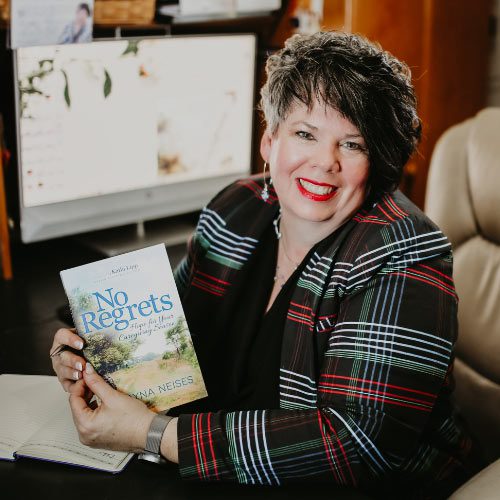5 Benefits of Assisted Living for Elders
Assisted living for elders represents a significant step in ensuring that seniors live a comfortable, dignified, and safe life in their later years. This blog explores the various aspects and benefits of assisted living, helping families understand why it might be the right choice for their loved ones.
What Is Assisted Living?
Assisted living is a housing option for elders that provides professional care support in a residential setting. Its purpose is to offer seniors a place where they can receive assistance with daily activities while maintaining a level of independence. It’s an ideal solution for those who require help with day-to-day tasks but do not need the more intensive care of a nursing home.
Understanding Assisted Living Facilities
Assisted living facilities are designed to provide a supportive environment for seniors. These facilities combine housing, support services, and health care, as needed. The primary purpose of assisted living facilities is to promote the well-being, independence, and quality of life of seniors, ensuring that they receive the appropriate level of care.
There are many different types of assisted living, depending on one’s needs, budget and preferences. Some assisted living communities are quite small and intimate, often replicating a family home, while others will feel like living at a large, upscale condo. The staff often helps with food, laundry, cleaning and dispensing medications, while offering enrichment activities and outings. Assisted living provides more hands-on help than found in Independent Living communities, but less than that found at Memory Care communities and Nursing Homes.
5 Benefits of Assisted Living Facilities
- Enhanced Quality of Life: Assisted living facilities provide a community environment that can enhance the social life of seniors, offering various activities and opportunities for socialization. These activities range from brain-games, crafts, and other creative pursuits to keep minds active, as well as excursions to local community events, public parks and even the grocery store. Some assisted living communities arrange social gatherings, bring in entertainment, like singers, musicians and dancers, to provide their residents with new and fun events.
- Professional Care Support: Residents receive personalized care from trained staff, ensuring that their health and daily living needs are met. While doctors are not normally on premises, there typically are registered nurses and professional caregivers, often known as CNAs (Certified Nursing Assistants). Some communities might bring in dentists, physical trainers, occupational therapists, and even hair stylists.
- Safety and Security: Assisted living facilities are equipped with safety measures and emergency response systems, offering peace of mind to both residents and their families. Some include fall-detection systems or alarms on doors and windows to ensure that residents don’t wander away without someone alerting staff.
- Independence with Assistance: Seniors in assisted living can maintain their independence while receiving the necessary support for daily activities. Oftentimes, these communities will provide tiered care, empowering some to live independently, while providing extra support for others.
- Health and Wellness Programs: Many facilities offer programs designed to promote physical and mental health among their residents. This can include age-appropriate exercise programs, and spiritual activities.
How Much Does Assisted Living Cost?
The cost of assisted living varies depending on factors such as location, the type of services offered, and the level of care required. It’s important for families to research and compare the costs of different facilities to find one that fits their budget and meets their needs.
How to Choose the Right Assisted Living Facility
Choosing the right assisted living facility involves several considerations:
- Evaluate the location and its convenience for family visits.
- Look into the services and amenities offered to ensure they match the senior’s needs.
- Check the credentials and training of the staff.
- Read reviews and get feedback from current residents and their families.
- Tour a few communities and interview their executive directors.
- And, when you’re close to making a decision, we suggest “popping into” the one you prefer – without notice – so you observe daily life when you’re not expected, including the number of staff, the quality of food, and the overall cleanliness.
Common Misconceptions About Assisted Living
Here are some common misconceptions and myths that people might have regarding assisted living facilities for the elderly. There are both pros and cons of senior living communities, but understanding the living facility in depth is important.
Myth: Loss of Independence
Reality: One of the main benefits of assisted living is that the good communities promote independence among seniors, offering assistance only where needed. Assisted living communities can help create routines and systems that help older adults find success at remaining independent.
Before my grandmother moved into assisted living, due to her mobility limitations, she spent most of her day at home alone and needed constant in-home caregiver assistance to complete most daily tasks. Once she moved into assisted living, she finally had a chance to socialize with other people her age while also spending time with wonderful caregivers who helped her stay sharp.
Myth: Assisted Living is the Same as Nursing Homes
Reality: Assisted living provides a less intensive level of care compared to nursing homes, focusing more on helping residents with daily activities. More likely than not, there is no doctor on the property, so residents who require medical assistance will likely have to travel to their own doctor’s office if a nurse cannot meet their needs. Some assisted living communities have arrangements with physicians to be on call and visit on a regular basis; so, in choosing a facility, check to see if this may be an option for you.
Myth: Assisted Living Isolates Seniors
Reality: Assisted living facilities often provide a more active and social environment for seniors than living alone. In fact, many older adults move to assisted living following years of social isolation, just like my grandmother. After an adjustment period, these new residents often embrace their new community, make new friends and embrace a daily routine full of activities and gatherings.
Assisted living for elders offers a balanced blend of independence, support, and community. These facilities provide a safe, caring, and engaging environment for seniors, addressing a wide range of needs including clothing needs for the elderly. Understanding the benefits and dispelling common myths can help families make informed decisions about assisted living options for their loved ones.




























Already a Member? Login Here.
Not Yet a Member? Join the Conversation Today!